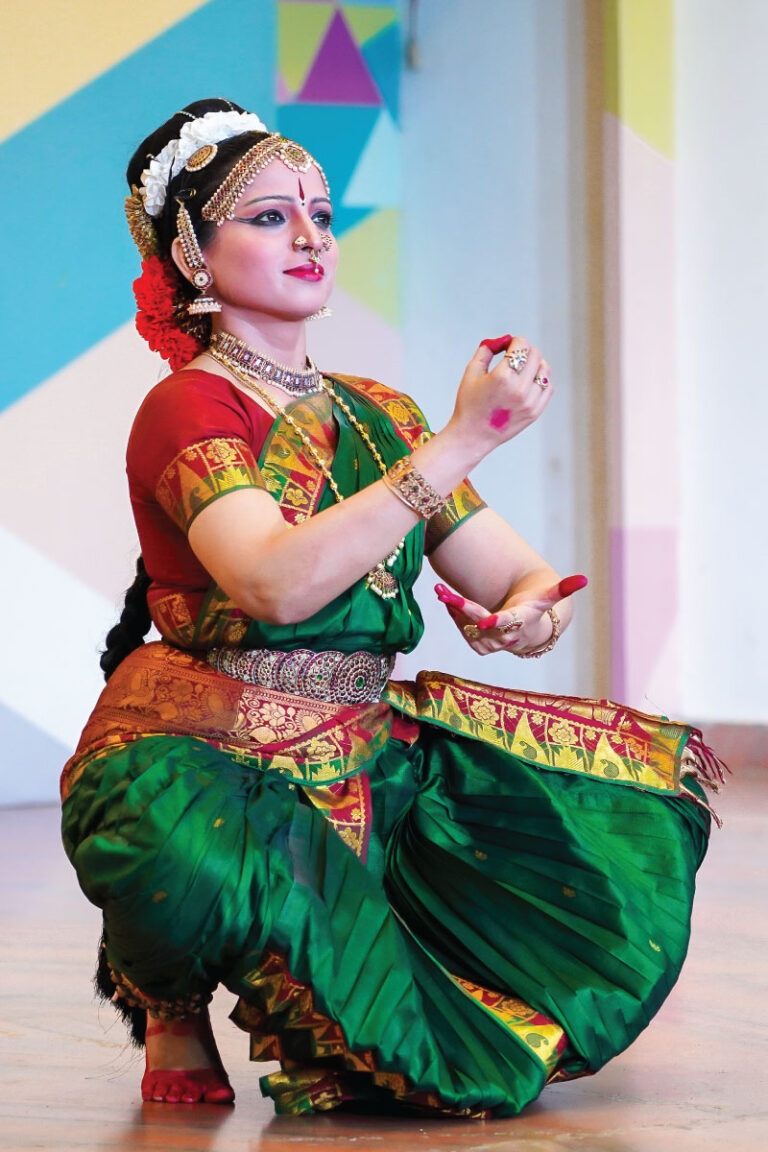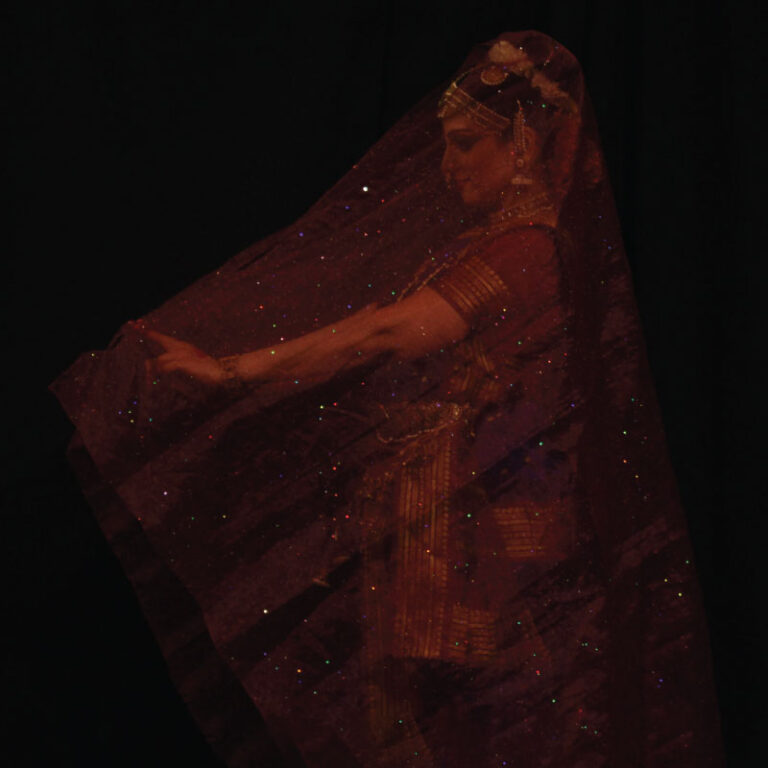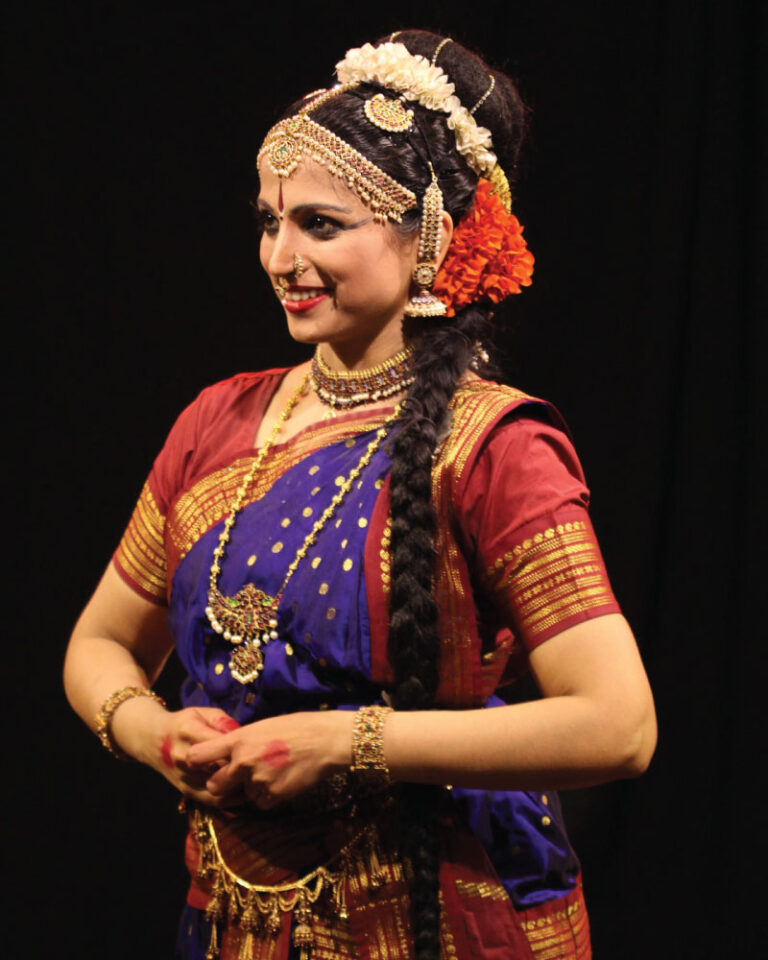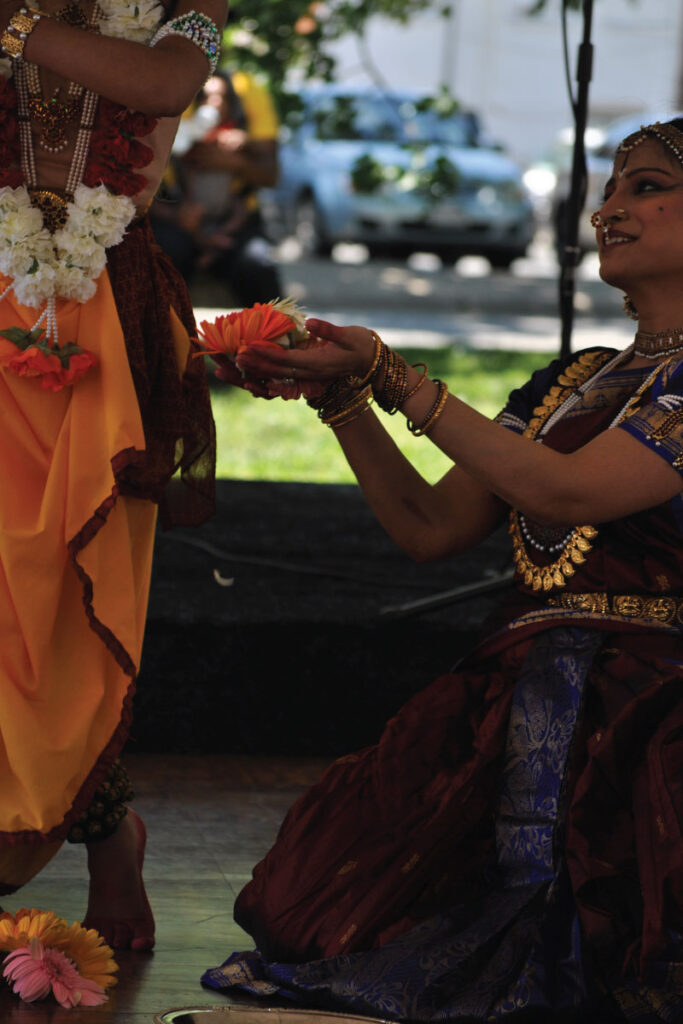TRADITIONAL REPERTOIRE
Traditionally Kuchipudi draws its roots from Yakshagana traditions – which are elaborate dance-dramas that harness in full measure the four formats of Abhinaya namely Angika (Body movement), Aharya (Attire, make-up etc), Vachika (Speech) and Satvika (True emotion). With elaborate costumes, dialogues, song and movement, Yakshaganas, Kalapas, and Nritya-rupakas are the stronghold of traditional Kuchipudi. It is from these formats that the solo repertoire has been crafted. This paddhati or margam typically starts with Invocation and ends in a Tarangam or a Thillana.
Srividya's original work in the Kuchipudi Paddhati.

Invocation
The traditional invocation in Kuchipudi is an ode to the Mother-Goddess, invoked as Bala Tripura Sundari, the presiding deity of the Kuchipudi village. The first presentation is usually on Sri Ganapathi, extolled as the remover of obstacles or on Sri Saraswati, the Goddess of Learning and Wisdom.

Jathiswaram/ Sabdam
Both of these items are based predominantly in pure dance or nrtta, especially the Jathiswaram. Sabdams are lilting pieces with stories encoded in them that pay tribute to either a deity or a king.

Kriti/ Keertana
The kriti or keertana comes next. The ancient land of Bharat has given birth to innumerable saint-poets whose fervour of devotion has led to the rise of innumerable songs. From the Telugu poets Sri Annamacharya, to Sri Thyagaraja, from Sri Syama Sastri to Sri Muttuswami Deekshitaar, and the entire plethora of devaranamas – devotional poetry from the land of Karnataka in particular, the repository for keertanas and kritis is vast. Works of choreography based on Keertanas and Kritis are examples of Nritya, ie: they’re a combination of Nritta (pure dance) and Abhinaya (expression).

Pravesa Daruvu
Pravesa Daruvus are glorified entries of various characters taken from the ancient Indian epics – the Itihasas and the Puranas. They are usually excerpts from a Yakshagana that portrays the entire story of which the entry of the protagonist is only one part. For example: Satyabhama, Bheema, Krishna, Hiranyakashyapa pravesa daruvus.

Padam
Pure abhinaya has a special place of reverence in the Kuchipudi repertoire. To delve deep into the character being portrayed, to become one with the emotions of that protagonist is skill that cannot be imbibed enough. There is always a new nuance to explore, and a hitherto hidden new layer of thought to chance upon. Padams are pieces that are the very definition of abhinaya. These are usually love songs, lyrical in structure and languorous in rendition. They carve out in their own sweet time the various shades of a protagonist, usually a Nayika or Heroine who is in a certain state of mind due to the actions or lack-thereof of the Hero or Nayaka. The famous Telugu poet Kshetrayya is synonymous with Padams. Others include Sarangapani, Maharaja Swati Tirunal, Ghanam Krishna Iyer etc.

Tarangam/ Thillana
The last piece of a Kuchipudi solo repertoire is the Tarangam or the Thillana. While Tarangams are songs composed by Yati Sri Narayana Teertha in his “Sri Krishna Leela Tarangini, Thillanas are lilting numbers are start with a strong Nritta component before arriving at lyrics that usually describe a deity.
Tarangams occupy a distinct place of pride in Kuchipudi. They are very nritya-oriented, usually describing Lord Krishna and His life from birth till his wedding with Sri Rukmini. A part of the Tarangam is reserved for a unique feature – the dance on the brass plate. Here the dancer gets a chance to display his/her prowess through various rhythmic delineations standing atop a brass plate. It is a beautiful feature that brings the recital to a graceful and energetic close.